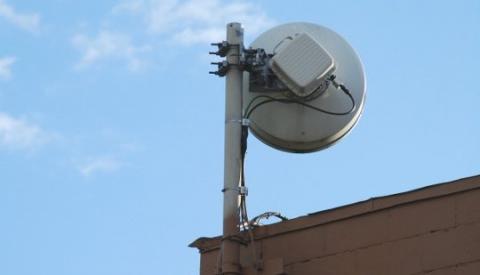New gigabit broadand point to point transmission operating in the free 38GHz spectrum band is now available and could provide an opportunity for NBN Co to connect hard to get to premises to the nearest node rather than to satellite. In The Australian the offering from Starry, a U.S. start-up, is discussed and how it will provide a flexible option for telcos.
Read the full article below
New, low-cost gigabit-wireless broadband systems that use advanced versions of technologies developed by the US military could provide NBN Co an opportunity to connect premises that fall outside the fixed access network footprint to the National Broadband Network.
Up to 3 per cent of homes around the edges of the NBN fixed-access network could be forced on to satellite but with the development of low-cost gigabit point-to-point wireless-link technology, NBN Co could use a wireless solution and potentially protect the limited capacity of the NBN satellites.
A gigabit wireless point-to-point solution for the US telecommunications market released by US-vendor Starry, started by Aereo founder Chet Kanojia, is awaiting final approval from the US Federal Communications Commission. With Aereo, a digital TV antenna and cloud DVR that was shut down by the US Supreme Court in 2014, managing to give traditional TV broadcasters a nasty headache, Starry’s capabilities are likely to be closely scrutinised by traditional internet service providers.
At the Starry launch last month, Mr Kanojia said “people have historically assumed fibre is the answer at all times” and that fibre to the premises would be a technology of choice for future access network rollouts, if government-sponsored. However, in areas where full-fibre becomes economically unviable, wireless point-to-point solution can provide a cost-effective way to provide high-speed broadband to consumers.
Starry’s product range includes WiFi routers and extenders that operate within homes and to connect a home to the internet there is a small device that sits outside a window that provides a high-speed point-to-point wireless broadband link to a nearby fibre gateway.
The solution operates using the 38 GHz unlicensed spectrum band and consists of Starry Beam, which is a fibre gateway located on a neighbourhood tower or other high point such as a multi-floor building and Starry Point, which is a self-installed antenna that can sit outside a window on the side of the house facing the Starry Beam location.
The FCC’s decision in 2013 to adopt a rule change for the use of the 57-64 GHz spectrum, known as the 60 GHz band, to allow higher transmission power and emissions for outdoor deployment of point-to-point broadband links is a boon for start-ups such as Starry.
The spectrum management changes, adopted by the FCC, open the way for deployments of high capacity point-to-point wireless broadband links that connect premises to fibre-connected gateways between 1km and 2km away.
The FCC decision also ensured the 60 GHz unlicensed spectrum band could be used for the 802.11ad WiFi standard known as WiGig to support high-definition streaming with data transfer speeds of up to 7 Gbps.
Starry’s touch screen WiFi router, Starry Station, does not support 802.11ad but it does support 802.11ac and 802.15 for Internet of Things devices and other earlier WiFi versions.
Starry’s journey looks set to begin in Boston and the technology will be tested across more cities this year. Wireless broadband systems like it provide a low-cost high-speed broadband solution for hard to get to locations where the cost of alternative approaches, including fibre to the premises, fibre to the node and LTE-based fixed wireless, does not warrant the infrastructure installation.
Starry Station is available for pre-order from Amazon for $US350 ($488).





